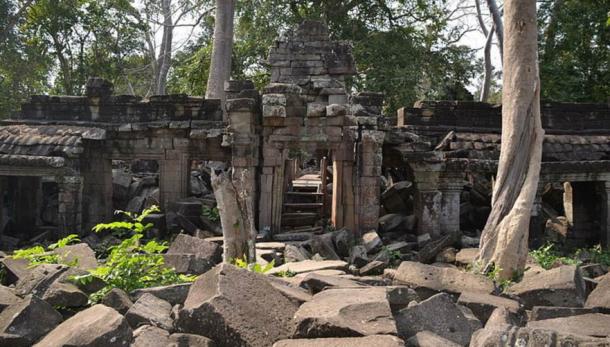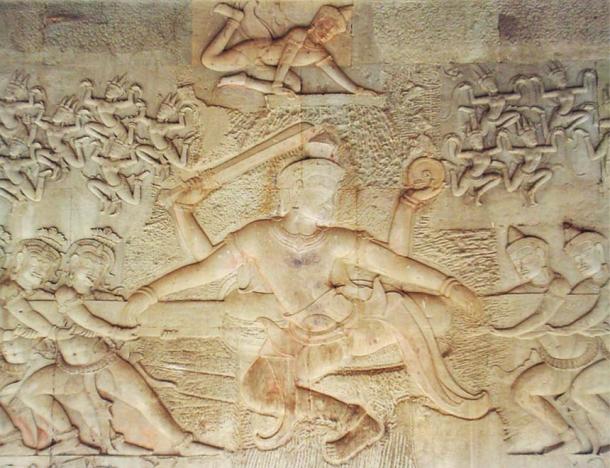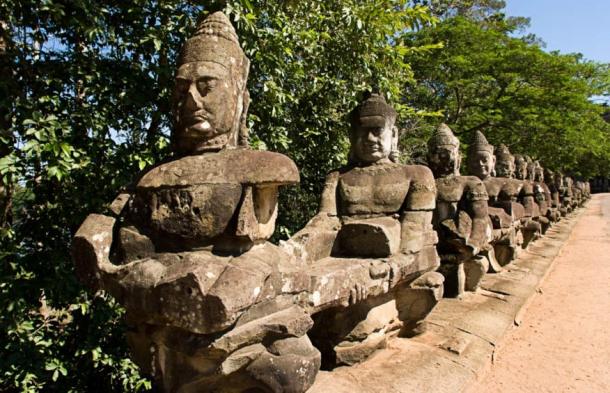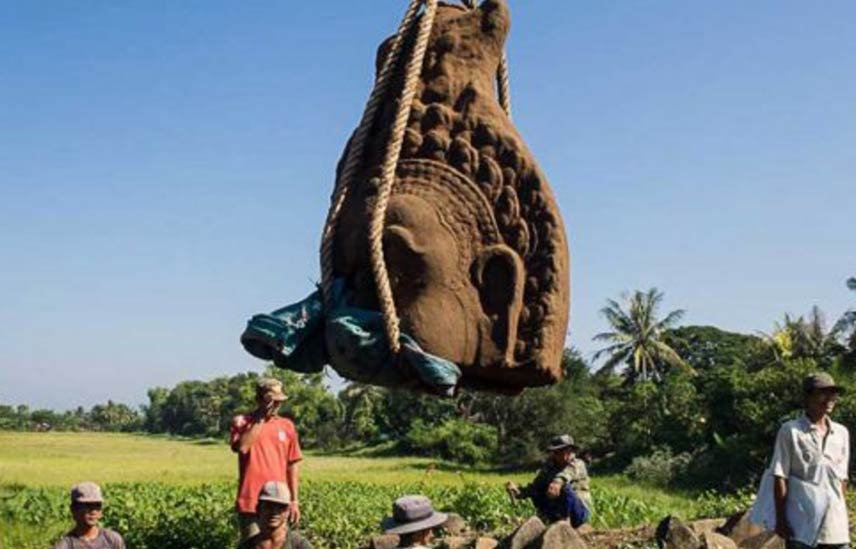21 NOVEMBER, 2014 - 01:43 APRILHOLLOWAY
A renovation of Banteay Chhmar temple in Cambodia left workers astounded after three enormous Angkorian-era statue heads were found under half a metre of soil – two intact and one broken. The heads were part of a causeway depicting an ancient Hindu legend in which gods (devas) and demons (asuras) worked together to churn the ocean and release Amrita, the nectar of immortal life.
According to a news release in Phnom Penh Post, the statue heads are made of sandstone and date back to the end of the 12th-century reign of Jayavarman VII, a king of the Khmer Empire in present day Siem Reap, Cambodia.
The heads were found at Banteay Chhmar temple, which comprises one of the most important but least understood archaeological complexes from Cambodia's Angkor period. The complex is oriented to the east, where there's a dried baray (artificial body of water), which had a temple on an island (mebon) in its centre. Besides the main temple and the mebon, there are other eight secondary temples. The outer gallery of the main temple is carved with bas-reliefs depicting military engagements and daily life scenes. Four stelae detailing Jayavarman VII's genealogy were placed at each of the four corners of the third enclosure wall, mirroring the stelae that occupied the four corner-shrines of the king's capital at Angkor Thom.

Main entrance to Banteay Chhmar Temple, Banteay Chhmar (Wikimedia)
According to preservation official Mao Sy, the newly discovered statue heads probably broke off decades ago and became naturally buried by layers of earth brought in by floods. However, this may have been a blessing, as Banteay Chhmar Temple has already suffered extensive looting, and the flooding may have saved them from becoming lost to history.
The Phnom Penh Post reports that the heads were part of a causeway depicting the famous Hindu fable known as ‘the Ocean of Milk’. According to Hindu cosmology, the Ocean of milk is the fifth from the center of the seven oceans that surround directional space. At the suggestion of Vishnu, the devas (gods) and asuras (demons) worked together for a millennium to churn the ocean (by pulling on the Serpent King) and release Amrita, the nectar of immortal life. When the Amrita finally emerged along with several other treasures, the devas and asuras fought over it. However Vishnu in the form of Mohini the enchantress manages to lure the asuras into handing over the Amrita, which she then distributes to the devas. Rahu, an asura, disguises himself as a deva and tries to drink some Amrita himself, but Surya (the sun-god) and Chandra (the moon-god) alert Vishnu to this deception. Vishnu then decapitates Rahu just as he is about to swallow the nectar, leaving only his head immortal.

A bas-relief at Angkor Wat depicts the devas and asuras working together to stir up the Ocean of Milk in an attempt to free the elixir of immortality called amrita. (Wikimedia)
The causeway at Bantaey Chhmar is believed to have originally resembled that seen at Angkor Thom, in which a row of statues is seen pulling the Serpent King to church the Ocean of Milk. Taking into account the size of the heads found at Bantaey Chhmar, the causeway must have once been quite a spectacle.

The causeway at Angkor Thom consists of a row of statues pulling on the Serpent King. (BigStockPhoto). It is believed the newly found statue heads at Bantaey Chhmar formed part of a similar causeway.
The statue heads will undergo restoration, along with the Banteay Chhmar temple, and it is hoped that the more international visitors may travel to the spectacular ancient site once reparation is completed.
Featured image: One of the statue heads being lifted from the ground at Banteay Chhmar. Credit: Phnom Penh Post.
- See more at: http://www.ancient-origins.net/news-history-archaeology/three-enormous-statue-heads-unearthed-banteay-chhmar-temple-cambodia-002346#sthash.847SyHxe.dpuf


No comments:
Post a Comment